TL;DR
Most residential landscaping and hardscaping deliver a 35–60% ROI at resale, with basic curb appeal upgrades, lawn repair, and clean edging sometimes approaching break-even in entry-level markets. Personalized features (large fire pits, elaborate seat walls) often return 0–25%. The real value is speed-to-sale, fewer buyer objections (drainage, cracking, awkward layouts), and stronger offer activity. Use ReimagineHome.ai to preview cost‑smart, low‑maintenance landscaping ideas before you spend: https://www.reimaginehome.ai/?utm_source=blog
Why Outdoor Design and Curb Appeal Matter Right Now

Wide, well-defined paths improve comfort and curb appeal, easing buyer access and reducing friction.
Primary garden paths typically range from 36–48 inches wide for comfortable use, and front entries benefit from 60 inches at pinch points to allow two people to pass. In today’s market, curb appeal is a value filter: well-maintained lawns, clear pathways, and simple landscape lighting reduce buyer friction and can help homes sell faster and closer to list price. Small, strategic upgrades outperform big, polarizing statements—especially where drainage, grading, and maintenance are dialed in first.
Why Landscaping, Gardening & Hardscaping Are Changing
Hardscape elements often account for 50–70% of a low‑maintenance landscaping budget, so their layout, drainage, and material choice directly affect ROI. Climate pressure (heat, drought, storms), water restrictions, and work‑from‑home lifestyles are shifting priorities toward durable patios, simplified planting, and privacy that feels natural. Buyers and appraisers still lean on comparable interiors for price, but outdoor spaces influence buyer behavior: fewer red flags, fewer “project” deductions, and more confidence to offer. Prioritize repairs (cracked concrete, soggy lawn edges, failing walls) before aesthetic additions. In most markets, the winning formula is clean lines, restrained materials, and plants selected for the site—native or climate‑adapted species that keep irrigation, pruning, and pests in check.
Anecdote
A midcentury ranch on a corner lot struggled with standing water and a patchy lawn. Instead of an expensive full‑yard overhaul, the owners corrected grading, cut a simple 42‑inch concrete walk with gravel bands for drainage, and added three evergreen anchors with native perennials. With ReimagineHome.ai they tested two patio sizes and landed on a compact 12×16. The house listed three months later and went under contract in five days—no price cut.
Key Landscaping & Hardscaping Trends (and How ReimagineHome.ai Shows Them)
Experts recommend a 1–2% slope for patios and walks to move water away from the house—poor drainage can erase ROI fast. Current landscaping and hardscaping trends worth considering: - Layered planting and year-round structure - Stone, gravel, and stepping-stone paths - Outdoor rooms, seating pockets, fire pits - Drought-tolerant and native planting layouts - Modern curb appeal changes that boost value ReimagineHome.ai lets you preview these trends on your own home from a single photo. Test patio proportions, path alignments, step counts, and retaining wall heights; toggle between concrete, stone, and gravel; simulate uplighting and step lights; and visualize planting massing and privacy screens at realistic heights. Seeing how a 14×18 patio fits furniture, or how a hedge softens a fence line, helps you avoid overbuilding—and overspending—before you commit.
How to Use ReimagineHome.ai to Visualize Yards, Paths & Patios
For airflow and maintenance, shrubs should be planted 18–24 inches from foundations; trees should be placed outside mature canopy spread and root zones of utilities. Use ReimagineHome.ai this way: 1. Upload a clear exterior or yard photo. 2. Pick a style or function (low‑maintenance landscaping, modern hardscaping, family‑friendly, wildlife‑friendly, or water‑wise). 3. Test path shapes (straight vs. curved), patio sizes (10×12 for café seating; 14×18 for dining + grill), steps, and terraces for sloped yards. 4. Experiment with planting layers—evergreen bones, flowering accents, and groundcovers—plus lighting and focal points for curb appeal. 5. Generate multiple versions, compare side‑by‑side, and export your favorite concept to guide budgets and contractor bids. The result: a right‑sized plan that manages drainage, fits furniture, and looks intentional from the street and the kitchen window.
Real-World Stories — Landscaping & Hardscaping in Action
Thoughtful front yard updates can increase perceived value by 7–14% in buyer eyes, even when appraisals lean on interior comps. Three fast stories: - A small urban yard redesigned with raised beds and stepping stones for usable space. Outcome: less lawn to water, a 4‑season view from the living room, and faster sale—without a premium spend on stone. - A seller improving curb appeal ahead of listing. They pressure‑washed, edged, corrected downspout drainage, and refreshed mulch and lighting. Outcome: multiple offers opening weekend; avoided price cuts common to similar homes with deferred maintenance. - A family yard transformed for play, privacy, and low upkeep. They swapped a rarely used fire feature for a gravel terrace, native grasses, and a cedar screen. Outcome: less weekend work, reduced irrigation, and a yard that still photographs beautifully for future resale.
Visualization Scenario
Upload a dusk photo of your front elevation, pick “Modern Curb Appeal,” and test three lighting schemes: minimal step lights, warm wall washes on key verticals, and a combination with low path lights. Swap gravel for stone on the walk, try an 18‑inch steel edge, and preview a small ornamental tree offset from the entry. You’ll instantly see which version feels clear, safe, and low‑maintenance.
FAQ
- How do I design a small backyard layout?
Start with zones that each earn their keep: 60–70% hardscape for function, 30–40% planting for softness and privacy. Keep primary paths 36–42 inches wide, right‑size a patio to the furniture you’ll actually use, and add vertical layers (trellis, small trees) to expand the feel.
- How do I create low-maintenance landscaping?
Rule: reduce lawn, pick native or climate‑adapted plants, and use drip irrigation. Choose mulched beds with groundcovers, evergreen structure, and gravel where water is scarce. Avoid thirsty annuals and oversized hedges that need monthly shearing.
- Can I preview landscaping ideas using a photo?
Yes. Upload a snapshot to ReimagineHome.ai to test patio sizes, path materials, lighting, and planting layers in minutes, compare options, and share a plan with your contractor.
- How far should shrubs be from my foundation?
Maintain an 18–24 inch offset for air circulation and maintenance; place trees the full mature radius from structures and utilities.
- What materials work best for modern hardscaping?
Concrete, large‑format pavers, and natural stone (with a 2–3 material palette max) read clean and timeless. Rule‑of‑thumb: pick one primary surface, one accent texture, and one edging metal to avoid visual clutter.
Visualize Your Home’s Next Chapter
Mornings on a sun‑warmed step with coffee. Evenings under soft path lights, with air moving through tall grasses. A clean arrival sequence that makes guests feel oriented and welcome. Outdoor design doesn’t need to be complicated to be compelling; it needs to be clear, climate‑savvy, and easy to care for. Before you break ground, explore every possibility. Try ReimagineHome.ai with a single photo to visualize landscaping, gardening, and hardscaping options tuned to your home and budget: https://www.reimaginehome.ai/?utm_source=blog
.svg)

.svg)

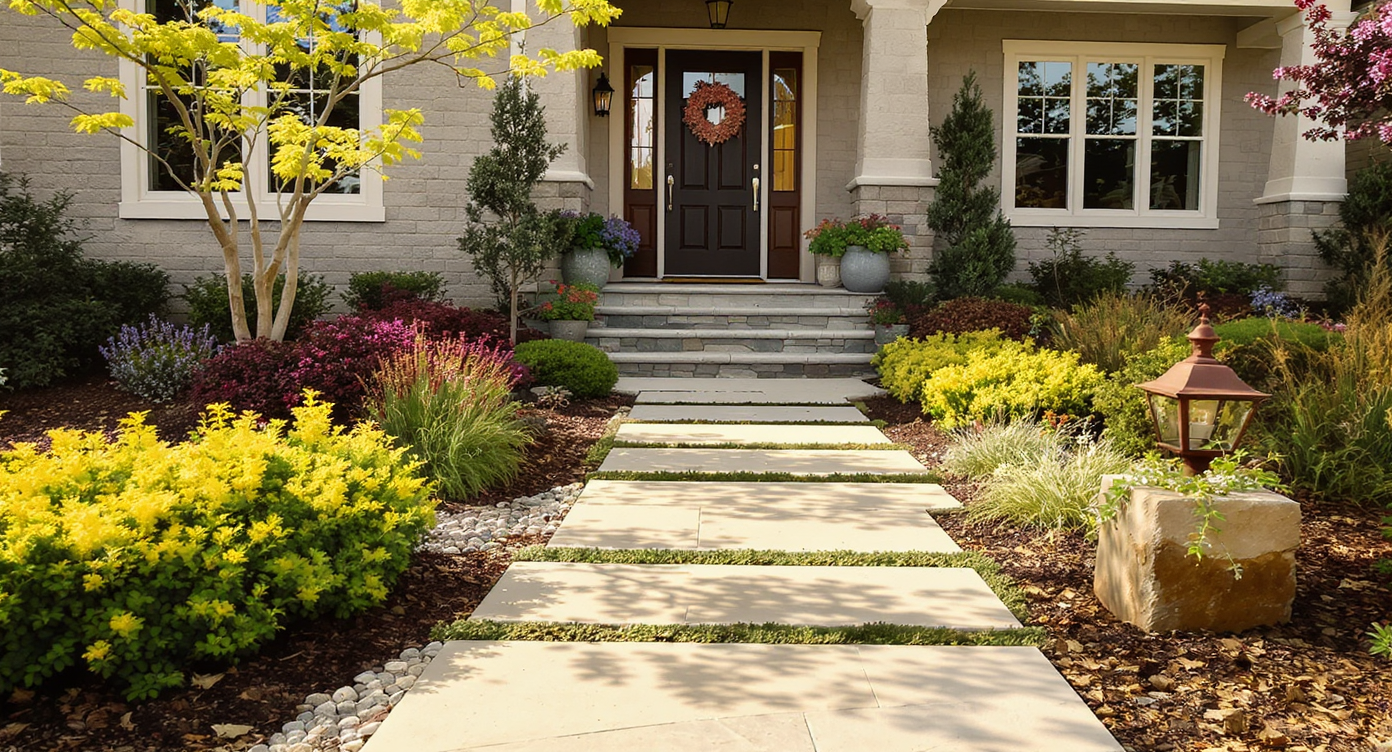
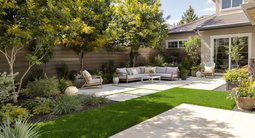
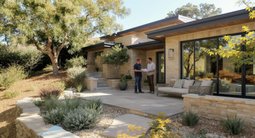


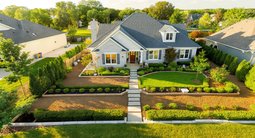
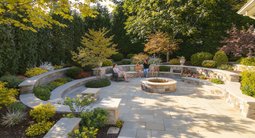


.png)